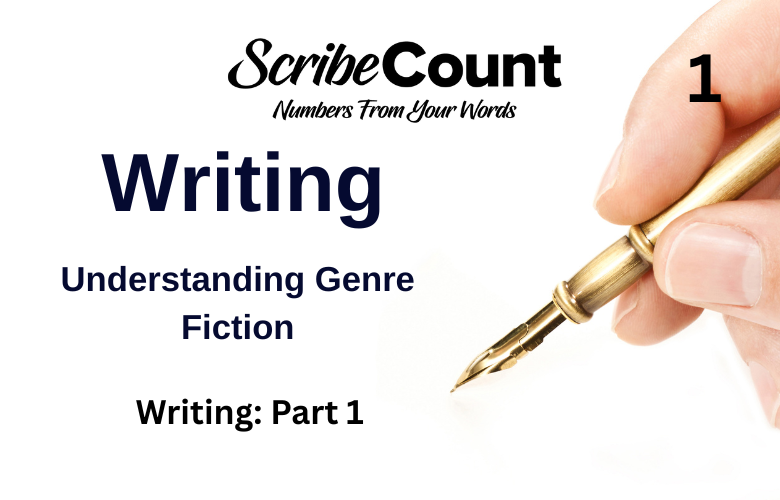Writing Genre Fiction as an Indie Author: Stories That Sell
If you found your way here its likely you are writing, or thinking about writing, genre fiction. If so, you are in the right spot at the right time.
Today, thousands of indie authors are making a living—and a legacy—writing genre fiction. Whether it's romance, science fiction, fantasy, thriller, or mystery, genre fiction thrives in the indie space because it meets readers where they are: eager for emotional engagement, immersed in familiar tropes, and hungry for binge-worthy series.
But genre fiction isn’t just about sales or algorithms. It’s a centuries-old way of organizing story around emotion, stakes, and reader promise. Each genre delivers a distinct reading experience, and for the indie author, understanding how to write within—and play with—those expectations is the difference between an underperforming book and a reader magnet.
To write genre fiction as an indie is to combine craft, market knowledge, and entrepreneurial courage. But this road, while demanding, is paved with more opportunity than ever before. Let's cover a few things before we set off.
What Is Genre Fiction?
Genre fiction refers to stories written with specific conventions, emotional beats, and reader expectations in mind. It includes genres like:
- Romance
- Mystery/Detective
- Thriller/Suspense
- Science Fiction
- Fantasy
- Horror
- Historical Fiction
- Westerns
- Young Adult (YA)
Unlike literary fiction, which often prioritizes internal conflict and linguistic innovation, genre fiction thrives on plot, structure, pacing, and delivering on reader “promises.” Readers of romance expect a “happily ever after.” Mystery lovers want to follow clues. Thriller fans crave escalating danger. These aren’t limitations—they’re opportunities to connect.
Many of the most commercially successful books in history are genre fiction: The Da Vinci Code, Harry Potter, The Hunger Games, Twilight, and Outlander to name just a few. These books weren’t just beloved—they became franchises.
Indie authors thrive in genre fiction because it aligns perfectly with self-publishing’s advantages: quick release cycles, series potential, and a hungry fan base that rewards consistency.
Genre Popularity: What Readers Want
Understanding what genres dominate the indie market is vital. While literary fiction can flourish in niche markets, genre fiction dominates the digital shelves. According to data from Author Earnings and K-lytics, the following genres consistently top the charts:
Top-Selling Indie Genres (2024):
- Romance – especially contemporary, billionaire, and paranormal subgenres
- Mystery & Crime – cozy mysteries, police procedurals, and amateur sleuths
- Thriller & Suspense – domestic thrillers, legal thrillers, and espionage
- Fantasy – epic fantasy, sword & sorcery, and urban fantasy
- Science Fiction – space opera, dystopian, cyberpunk
- Young Adult – fantasy, sci-fi, romance blends
- Horror – supernatural horror and psychological terror
- Historical Fiction – often with strong romantic or mystery elements
Romance remains the most lucrative and consistent indie genre. Some estimates suggest that romance accounts for nearly 40% of all eBook sales. That’s no surprise: romance readers are prolific, loyal, and responsive to series. Mystery and thriller come close behind, offering strong appeal for binge readers who crave familiar patterns and high-stakes tension.
Reader Expectations and Tropes: Delivering the Emotional Experience
Genre fiction thrives on tropes—familiar narrative devices that signal what readers want:
· Romance: enemies-to-lovers, fake dating, second chance
· Mystery: locked-room puzzle, detective sleuth, red herrings
· Thriller: ticking-clock, conspiracies, personal revenge
· Fantasy: chosen-one, magical prophecy, secret royalty
· Sci‑Fi: AI uprising, dystopia, space exploration
Tropes function like signposts: readers know what they're getting. Authors can adhere—or subvert them creatively—for emotional impact and market visibility.
Success Stories: From Indie to Industry Legend
Many authors started in genre fiction and built full-time careers with indie publishing. A few shining examples include:
- Hugh Howey – Author of Wool, which became the Silo series on Apple TV.
- Bella Andre – Romance author who hit the NYT list as an indie and now manages her own publishing imprint.
- Andy Weir – Self-published The Martian, which led to a major motion picture and traditional publishing deal.
These are not flukes. They are the result of consistent writing, savvy branding, and treating indie publishing as a career, not a side hobby.
Final Thoughts: Write Boldly, Publish Smart, Stay in the Game
If you’re an aspiring indie author thinking about genre fiction, here’s the good news: you’re entering the right space at the right time. Never before has it been easier to write, publish, and profit from genre stories. But the key is consistency. Read in your genre. Learn what readers expect. Hone your craft. Hire professionals for editing and covers. And above all—keep writing.
As Hugh Howey once said:
“There’s never been a better time to be a writer. We’ve gone from asking for permission to telling our stories directly to the world.”
And the world is listening.
In the following articles we'll discuss each of the most-popular genres in detail. Knowing them is knowing your readers.

